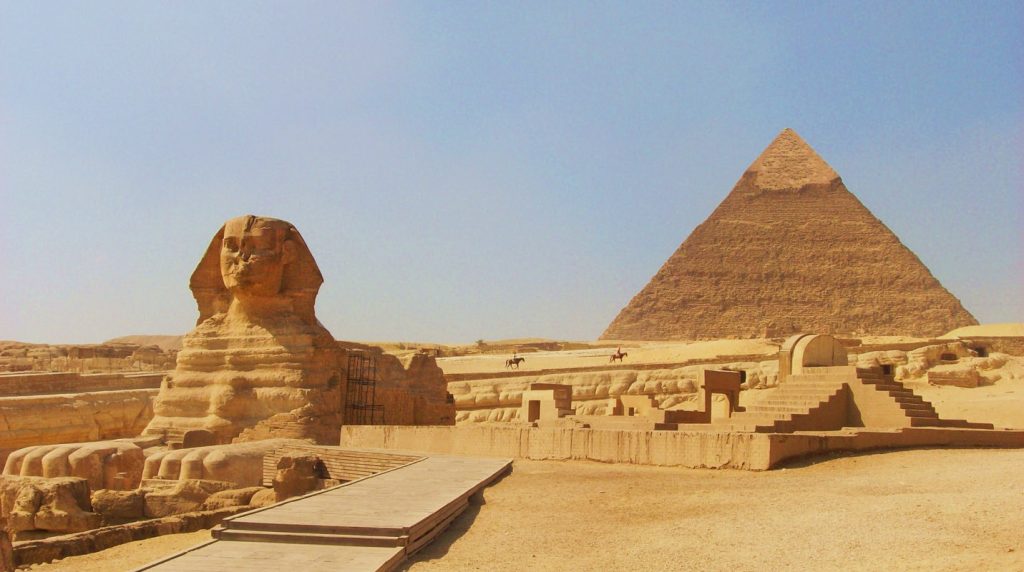
PHOTO: travelplanet.in
“I really believe that Cheops’ chamber is not discovered yet, and all three chambers were just to deceive the thieves, and the treasures of Khufu [are] still hidden inside the Great Pyramid.” – Egyptologist Zahi Hawass, former Egyptian minister of antiquities.
When archaeologists first broke into the Great Pyramid of Giza, they found it already desolate and robbed. Even with all of the false chambers and huge blockages the builders of the monument put in place, ruthless grave robbers still found their way in.
Egyptologist Mark Leher, who leads AERA, a team that has been excavating at Giza for 30 years, has collaborated with the Science Channel to detail the secrets of the Great Pyramid for viewers using computer animations to illustrate the ingenious design the Pyramid’s engineers left behind.
Most historians and researchers believe the Great Pyramid belongs to the pharaoh Khufu (Cheops), who reigned in Egypt from 2551 BC to 2528 BC. He was the pharaoh to order the construction of the Great Pyramid: the tallest, largest pyramid to ever be constructed in Egypt. It’s capped with limestone, and the outside originally shone white in the sun, a stairwell to guide the god-king’s soul to the land of the dead.
The Great Pyramid contains three large chambers: the King’s Chamber, where the Pharoah’s sarcophagus is believed to have been housed, the Queen’s Chamber, and the Subterranean Chamber. Nobody knows what the last two were used for. There isn’t enough information on them to tell.
A Primitive Machine
The Great Pyramid originally housed Khufu’s body and all of the earthly riches the dead god-king would need to live comfortably in the afterlife. This made it a prime target for grave robbers. It didn’t help that the monument was literally the biggest thing in Egypt. There was no way to keep the tomb hidden.
Instead, the builders constructed a system of blocks to keep the tomb sealed and safe after they left. It was sophisticated for its time.
![In the Great Pyramid, workers fit three massive slabs (red arrow) into the space just before the entrance to the King's Chamber. These were later dropped to block the entrance. [PHOTO: livescience]](https://historythings.com/wp-content/uploads/2016/07/great-pyramid-grooves-blocks.jpg)
In the Great Pyramid, workers fit three massive slabs (red arrow) into the space just before the entrance to the King’s Chamber. These were later dropped to block the entrance. [PHOTO: livescience]
![Three more granite blocks were slid into a shaft to block the entrance to the inner sanctum. [PHOTO: livescience]](https://historythings.com/wp-content/uploads/2016/07/great-pyramid-chute-blocks.jpg)
Three more granite blocks were slid into a shaft to block the entrance to the inner sanctum. [PHOTO: livescience]
Inside the Great Pyramid there are four other shafts. Two originate in the King’s Chamber where the empty sarcophagus was found. Two more originate in the empty Queen’s Chamber. Archaeologists inserted a few robots to poke around the shafts and found something rather intriguing: three doorways with copper handles.
Zahi Hawass thinks the shafts might lead to another burial chamber: the real one. He thinks the sarcophagus in the King’s Chamber was simply a decoy that the builders used to trick grave robbers into thinking they’d found the real thing and gotten all of the treasure the tomb had to offer.
If it’s true, it would’ve been a very clever ruse. All the shafts point to the King’s Chamber, making it seem like it’s the most important part of the entire Pyramid. Who would notice four little shafts when a massive tomb of a dead Pharaoh’s riches was ripe for the taking?
Archaeologists and Egyptologists have launched a project to scan the Great Pyramid using a myriad of different new technologies. If a hidden burial chamber really does exist, these scans will find it.

